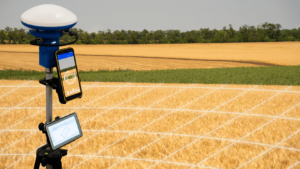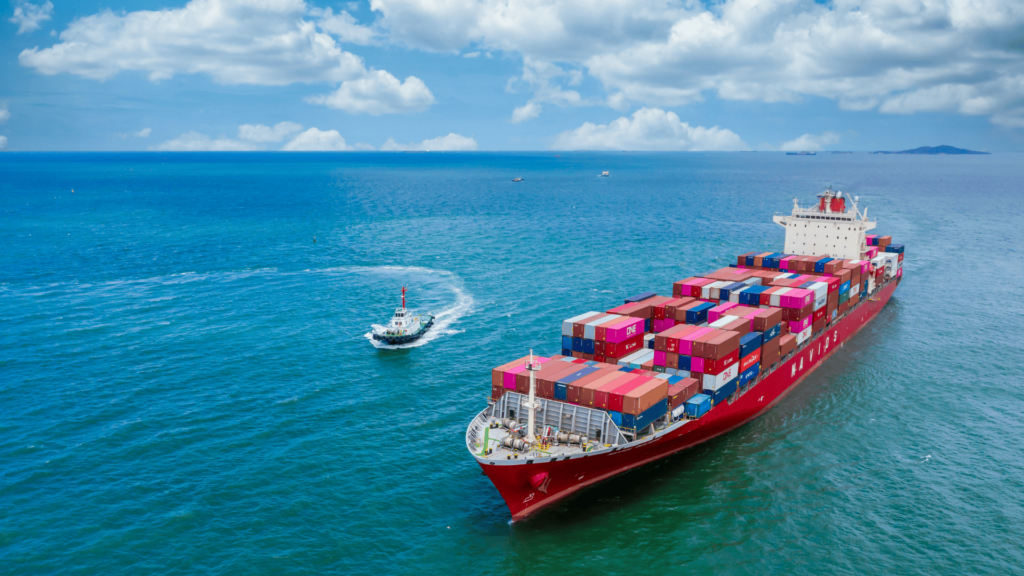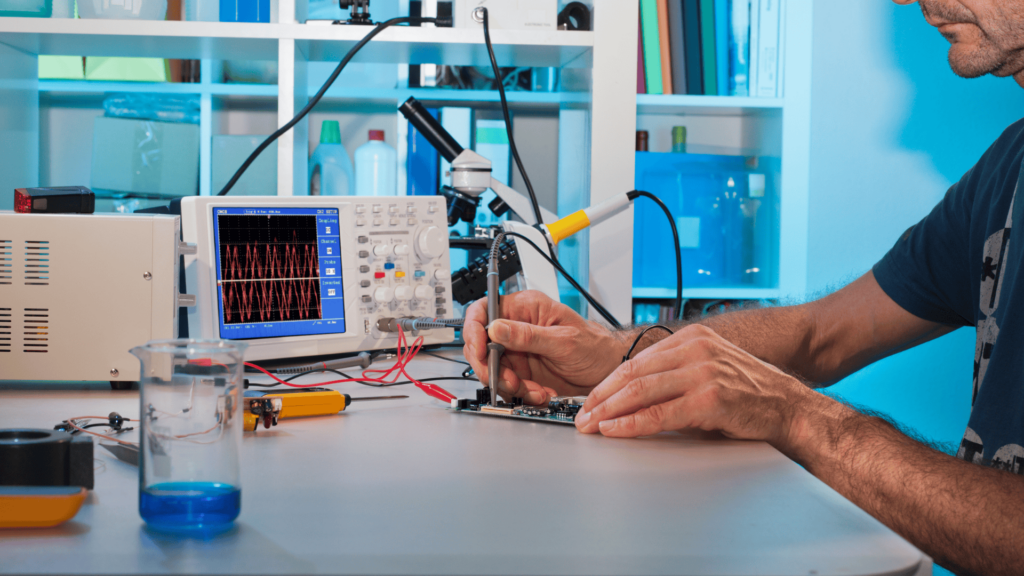IoT-Enabled Precision Agriculture: Optimizing Resources for a Sustainable Future
September 30, 2024
Table of contents
The agricultural sector is experiencing a significant transformation due to the application of Internet of Things (IoT) technologies. IoT-enabled precision agriculture is reshaping how farmers allocate resources, enhancing efficiency, sustainability, and profitability.
The Role of IoT in Precision Agriculture
IoT in agriculture involves a network of interconnected devices and technologies that collect, transmit, and analyze real-time data about various farming activities. These technologies help optimize soil conditions, crop health, weather monitoring, and machinery management.
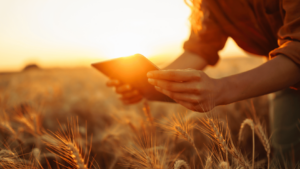
Soil and Water Management
Effective management of soil and water resources is vital for successful farming. IoT sensors, such as tensiometers and soil moisture sensors, offer detailed readings about soil conditions.
For instance, tensiometers assess the water tension in the soil, guiding farmers on optimal irrigation times and amounts. Capacitive soil moisture sensors, like those from Decagon Devices, provide accurate moisture measurements, enhancing irrigation tactics.
Smart irrigation systems, such as Netafim’s Precision Irrigation and the CropX Smart Irrigation platform, utilize this data to automate watering, ensuring that water is used efficiently. Advanced drip irrigation technologies, like JAIN Logic, target water delivery precisely where it’s needed, reducing waste and fostering sustainable practices.
Crop Monitoring and Health
IoT-enabled crop monitoring relies heavily on drones equipped with Multispectral Cameras and NDVI (Normalized Difference Vegetation Index) Sensors. Companies like DJI Agriculture and Parrot Bluegrass are leading the way with innovative solutions like drones that capture high-resolution images of crops, detecting early signs of stress, disease, or pest infestation.
In addition to drones, platforms like FarmLogs and Prospera Technologies analyze information from various sources to provide real-time insights into crop health. This allows farmers to apply treatments only where necessary, minimizing chemical use and maximizing yields.
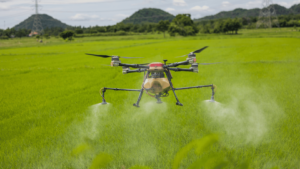
Climate and Environmental Insights
Weather conditions play a critical role in agriculture, and IoT-enabled weather stations—like those from Davis Instruments or Pessl Instruments’ METOS—help farmers track environmental factors such as temperature, humidity, rainfall, and wind speed.
By integrating this information with platforms like IBM’s The Weather Company, farmers can make timely decisions regarding planting, harvesting, and treatment applications. Access to real-time weather data empowers farmers to respond proactively to changing conditions.
Machinery and Equipment Management
IoT solutions extend beyond crop management to include farm machinery. Tools like John Deere’s JDLink or CLAAS TELEMATICS, allow for remote monitoring and management of equipment. These systems use various sensors to track machinery performance, fuel consumption, and maintenance needs.
JDLink, for example, provides real-time data on machine location, engine hours, and fuel levels, allowing for efficient management of the entire fleet. Predictive Maintenance Platforms like Uptake or Bosch IoT Suite analyze this data to predict when maintenance is needed, minimizing downtime and preventing costly breakdowns.
Resource Optimization through IoT
The essence of IoT-enabled precision agriculture lies in its ability to optimize resource use—whether it be water, fertilizers, seeds, or energy—while reducing waste and boosting yields.
Water Conservation
Smart irrigation controllers like Hydrawise and Rachio leverage real-time soil moisture data and weather forecasts to effectively manage watering schedules, ensuring crops receive the right amount of water without waste.
Variable Rate Irrigation (VRI) systems, such as those developed by Lindsay Corporation, apply varying water amounts to different areas of a field based on moisture levels, promoting efficient use of water and enhancing crop health.
Efficient Use of Fertilizers and Pesticides
IoT technology enables the precise application of fertilizers and pesticides through Variable Rate Technology (VRT) systems such as those provided by Trimble Agriculture or AGCO’s VarioDoc Pro. VRT uses data from soil sensors and yield monitors to apply the exact amount of fertilizer needed in specific areas of the field.
Additionally, IoT-driven pest monitoring systems like Semios and Trapview utilize pheromone traps with sensors to keep tabs on pest populations. By sending real-time alerts, these technologies enable timely pesticide applications, reducing chemical use and supporting ecological balance.
Energy Efficiency
Agricultural operations consume significant amounts of energy, from running irrigation systems to powering machinery. IoT-Connected Energy Management Systems like Enlighted or GridPoint help monitor and optimize energy use across the farm. These systems track energy consumption in real time and provide insights into reducing energy use and costs.
Moreover, solar-powered IoT devices, like those from SolarEdge and SunCulture, are gaining traction, allowing farms to reduce dependence on conventional energy sources while embracing renewable energy solutions.
Data-Driven Decision Making
The integration of IoT into agriculture generates vast amounts of data. However, the real value lies in how this data is analyzed and used to drive decision-making processes.
Predictive Analytics
Predictive Analytics Platforms like Microsoft Azure FarmBeats or Climate FieldView use IoT data to anticipate future farming conditions. For example, these platforms can predict the best time to plant based on soil moisture levels and weather forecasts, helping farmers maximize yield.
Similarly, predictive models powered by AI and Machine Learning Algorithms can forecast crop diseases by analyzing environmental data and historical disease patterns. This enables farmers to take preventive measures before an outbreak occurs, protecting crop health and yield.
Precision Livestock Farming
In addition to crop farming, IoT technology is also transforming livestock farming. Wearable IoT Devices like Moocall or Allflex monitor vital signs such as body temperature, heart rate, and activity levels in animals. This data helps in the early detection of illnesses, improving animal welfare, and reducing veterinary costs.
Automated Feeding Systems like GEA’s DairyFeed or Lely Vector adjust feed quantities based on real-time data collected from the animals. These systems ensure optimal nutrition while minimizing feed waste, contributing to the overall efficiency of livestock farming.
Challenges and Future Prospects
While the benefits of IoT-enabled precision agriculture are numerous, challenges remain. Data Security is a significant concern, as the increasing use of connected devices in agriculture makes farms vulnerable to cyberattacks. Solutions like Cisco Cyber Vision or Palo Alto Networks IoT Security can help secure these networks.
Cost is another hurdle, especially for smaller farms. However, as IoT technologies become more affordable, they will increasingly be accessible to a wider range of farmers, enhancing productivity and sustainability across the agricultural sector.
Looking ahead, the combination of IoT and Artificial Intelligence (AI) in agriculture is set to unlock even higher levels of efficiency. Advanced AI platforms, such as IBM Watson and Google Cloud AI, will facilitate deeper data analysis, enabling farmers to make even more precise decisions.
Additionally, the rollout of 5G networks in rural areas will enhance real-time data transmission, further amplifying the capabilities of IoT systems.
Conclusion
IoT-enabled precision agriculture represents a significant advancement in farming practices. By streamlining resource use, minimizing environmental impact, and boosting productivity, this technology is vital for a sustainable and efficient future in farming.
As global food demand continues to rise, IoT will play a crucial role in empowering farmers to meet this challenge while protecting our planet’s resources.




